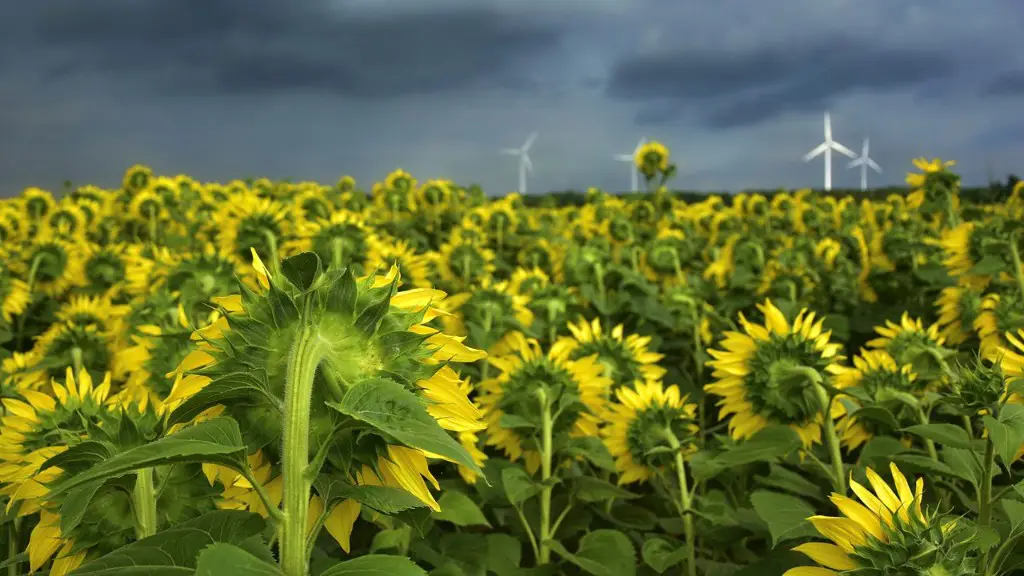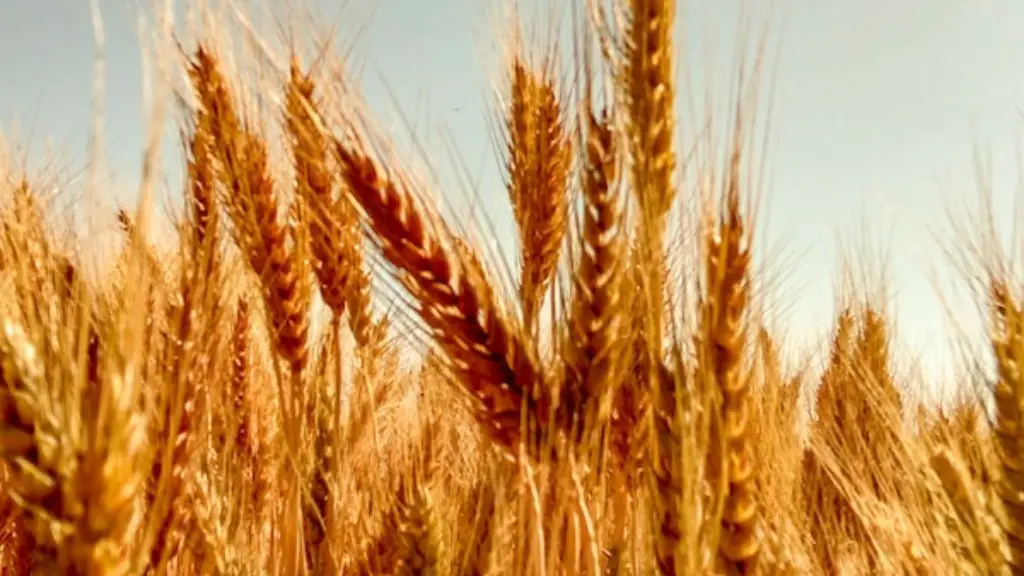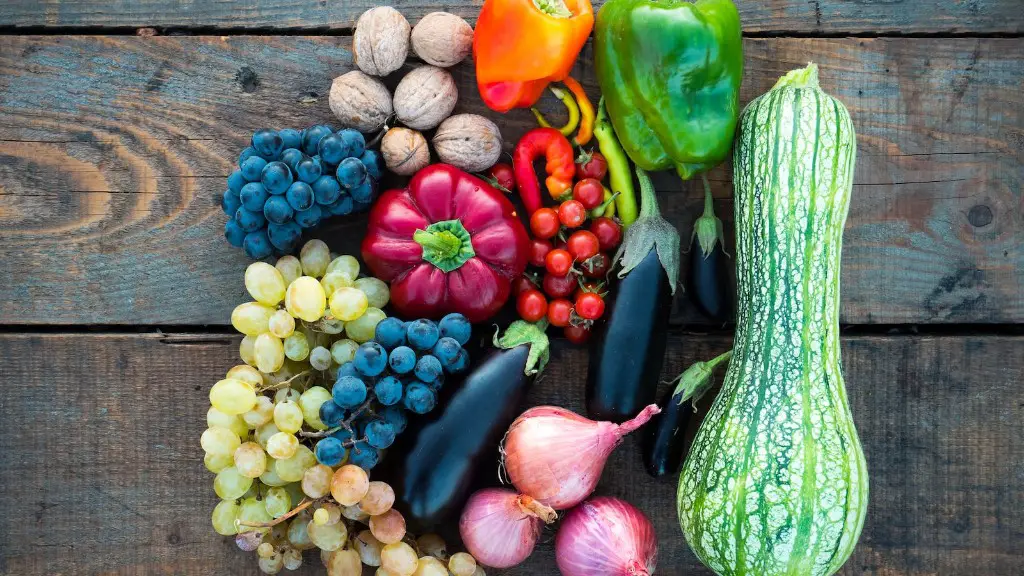As the world’s population continues to grow, so does the demand for food. Unfortunately, traditional farming practices are often damaging to the environment, depleting the soil of vital nutrients and causing pollution. Regenerative agriculture is a new approach to farming that reverses this damage, working with nature rather than against it. This results in more nutritious food, as well as other benefits like reduced dependence on chemical inputs and greater carbon sequestration.
There is a growing body of evidence that regenerative agriculture can have a positive impact on the food we eat. Agriculture is a major source of greenhouse gas emissions, so increasing agricultural productivity through regenerative methods could help to reduce these emissions. In addition, regenerative agriculture can help to improve soil health, which can in turn improve the quality of the food we eat.
How does agriculture affect our food?
The large-scale methods of industrialized agriculture are causing massive amounts of animal waste and runoff. This is degrading our soil, water and air. The food that is produced by these methods is also low in nutrients and is not good for our health.
According to a new study published in science journal PeerJ, food grown using regenerative agriculture practices has higher nutritional content. The University of Washington study found that regenerative agriculture practices improve soil health, which in turn leads to higher levels of nutrients in the food grown in that soil. The study’s findings suggest that regenerative agriculture could be a key part of creating a more sustainable and nutritious food system.
What are the effects of regenerative agriculture
Regenerative farming is a type of agriculture that focuses on rebuilding soil health and fertility. This type of farming has many benefits, including improving water infiltration, increasing fertility, and helping to fight climate change.
Regenerative food production is a type of agriculture that focuses on rebuilding the health of soils, ecosystems and species. This type of agriculture is more resilient to the effects of climate change, such as flooding, drought, and changes in temperature and precipitation.
What are the effects of modern agriculture on food resources?
Modern agriculture has had some bad effects on the environment. Soil degradation, water pollution, and greenhouse gases are the main problems. These problems can be addressed by using more sustainable methods of agriculture.
The food and beverage industry is under constant pressure to improve its sustainability credentials. However, there are a number of significant challenges that need to be addressed in order to make progress.
Traceability is a major issue, as it is often difficult to track the origins of food and drink products. This can make it difficult to ensure that products are ethically sourced and produced.
Packaging is also a major concern, as a huge amount of waste is generated each year. Greenwashing is another issue that the industry needs to deal with, as companies often make false or misleading claims about their products.
Dealing with food waste is another key challenge, as a large amount of food is wasted each year. This is often due to over-production or poor storage conditions.
Finally, supply chain issues are a major problem for the food and beverage industry. There are often complex supply chains involved in the production of food and drink products, which can make it difficult to ensure that products are ethically sourced and produced.
Why regenerative agriculture is the future of sustainable food?
Regenerative agriculture is a type of farming that focuses on rebuilding the soil. This is done through practices like reduced tillage, using compost and other organic materials, and avoiding synthetic fertilizers. These practices help to sequester carbon in the soil, which can have a huge impact on mitigating climate change. In addition to its benefits for the environment, regenerative agriculture also leads to more productive and resilient crops, and can help to improve farmers’ livelihoods.
Regenerative agriculture is a way of farming that focuses on improving the health of the soil. This type of agriculture has been shown to be more sustainable and to result in higher yields than traditional farming methods. However, regenerative agriculture requires more labor and is more expensive.
Can regenerative agriculture reverse climate change Big food is banking on it
Some experts claim that regenerative agriculture has the potential to reverse climate change by sequestering atmospheric CO2 in soil. Regenerative organic farming emphasizes the importance of soil health and includes practices like cover cropping, crop rotation, holistic animal grazing, and the use of compost. These practices can help to sequester carbon in the soil, which can then be used to offset greenhouse gas emissions.
Regenerative agriculture is a more sustainable form of agriculture that can improve long-term farmer livelihoods by reducing costs, improving crop yields and quality, and increasing resilience to market volatility and extreme weather events. It also opens up new green revenue streams for farmers, such as rewards for carbon capture and storage in the soil.
How does regenerative agriculture improve water quality?
Regenerative farming is a type of agriculture that focuses on building soil health, which in turn can have a number of benefits for water quality and quantity. For example, regenerative farms tend to use less chemical inputs, which can help to reduce water pollution from harmful chemicals. In addition, regenerative agriculture can help to improve soil permeability, which can lead to increased water infiltration and retention and less water runoff. This can help to reduce the risk of flooding and improve water quality by reducing erosion and sedimentation.
Implementing the 5 principles of regenerative farming can help create a more sustainable and environmentally friendly agricultural system. Soil armor, or the protection of the soil surface, can help reduce erosion and promote water retention. Diversity in crops and livestock can help create a more resilient system that is better able to withstand pests and diseases. Continual live plants and roots can help improve soil health and fertility. Livestock integration can help provide valuable nutrients and organic matter to the soil. And minimizing soil disturbance can help reduce compaction and promote the growth of healthy soil organisms.
What types of food can be regenerated
Food regeneration is the process of regrowing or re-growing food from scraps. It is a form of food waste management that can be used to reduce food waste and improve food security. There are many ways to regenerate food, and some of the most common methods include hydroponics, aeroponics, and aquaponics. Hydroponics is a method of growing plants in water without soil. Aeroponics is a method of growing plants in an air or mist environment without soil. Aquaponics is a method of growing plants and fish together in an integrated system.
Regeneration, or reheating already cooked food, is extremely easy. Cooled food can be directly placed in the cooker. Frozen food can either be gently defrosted in the refrigerator first or simply be placed directly in the cooker while still frozen and subsequently warmed up.
What is regenerative agriculture diet?
Regenerative farmers believe that grazing ruminant animals (cows, sheep, etc) in a natural setting, eating their natural diet of grass and other plants, is the best way to provide the animals with the nutrients they need. This diet is thought to be more nutritious than a diet of grain, and as a result, the meat from these animals is also more nutritious.
It is well known that food insecurity is a major problem in many parts of the world. However, it is important to note that there are a number of agricultural factors that can help to reduce food insecurity. For example, land size, crop diversity, and crop yields all play a role in food security.
In general, food insecurity decreases with increasing land size. This is because larger land sizes allow for more food production, thus providing more food for people to consume. Additionally, the diversity of food and cash crops as well as livestock also contributes to food security. A diversity of food crops means that there is a greater likelihood that at least some crops will be successful even in years when conditions are not ideal. Furthermore, livestock can provide a source of food and income in years when crop yields are low.
Finally, the yield of rice and vanilla also play a role in food security. High yields of these crops means that there is more food available for people to consume. Additionally, the income from selling these crops can help to offset the costs of food in years when crop yields are low.
In conclusion, there are a number of agricultural factors that can help to reduce food insecurity. Increasing land size, crop diversity, and crop yields are all important
How does modern agriculture play a role in solving the food security problem
Modern agriculture is doing an amazing job at helping farmers feed the world’s growing population while also reducing the environmental impact of growing food. Through innovations like digital tools and other advancements, farmers are able to more efficiently grow food, fuel and fiber while also minimizing their impact on the environment. This is a great example of how modern technology can be used to solve some of the world’s most pressing problems.
Modern farming is indeed doing its best to improve quality and safety in food production. This is most evident in the wake of various food scares in recent years. In response to these concerns, modern farmers have adopted a number of measures to ensure that their food is of the highest quality and is safe for consumption.
One such measure is the increased use of technology in food production. This includes the use of sensors and monitors to track various aspects of food production, from soil moisture levels to crop maturity. This allows farmers to more accurately target their interventions, resulting in higher quality and safer food.
Another measure that modern farmers have adopted is the implementation of strict food safety protocols. This includes ensuring that all food handling and processing is done in a clean and sanitary environment. In addition, farmers are now following HACCP standards (Hazard Analysis and Critical Control Points), which help to identify and control potential food safety risks.
By taking these measures, modern farmers are able to produce food that is of a higher quality and is safer for consumption. This is reassuring for consumers, who can be confident that the food they are eating is of the highest standard.
Conclusion
Regenerative agriculture is an approach to food production that focuses on rebuilding soil health and contributing to a more sustainable ecosystem. As opposed to traditional farming practices that can deplete soil of nutrients and lead to soil erosion, regenerative agriculture aims to enhance the land’s ability to provide food while also improving the surrounding environment. This type of farming often relies on practices such as cover crops, crop rotation, and composting to help improve soil health and reduce the need for synthetic inputs. In addition, regenerative agriculture can help to sequester carbon in the soil, which can help mitigate the effects of climate change.
A lot of food grown today is grown using harmful pesticides and GMOs. Regenerative agriculture is a type of farming that not only avoids using these harmful chemicals, but actually helps to regenerate the soil. Not only is the food grown using regenerative agriculture healthier for you, but it also tastes better.





